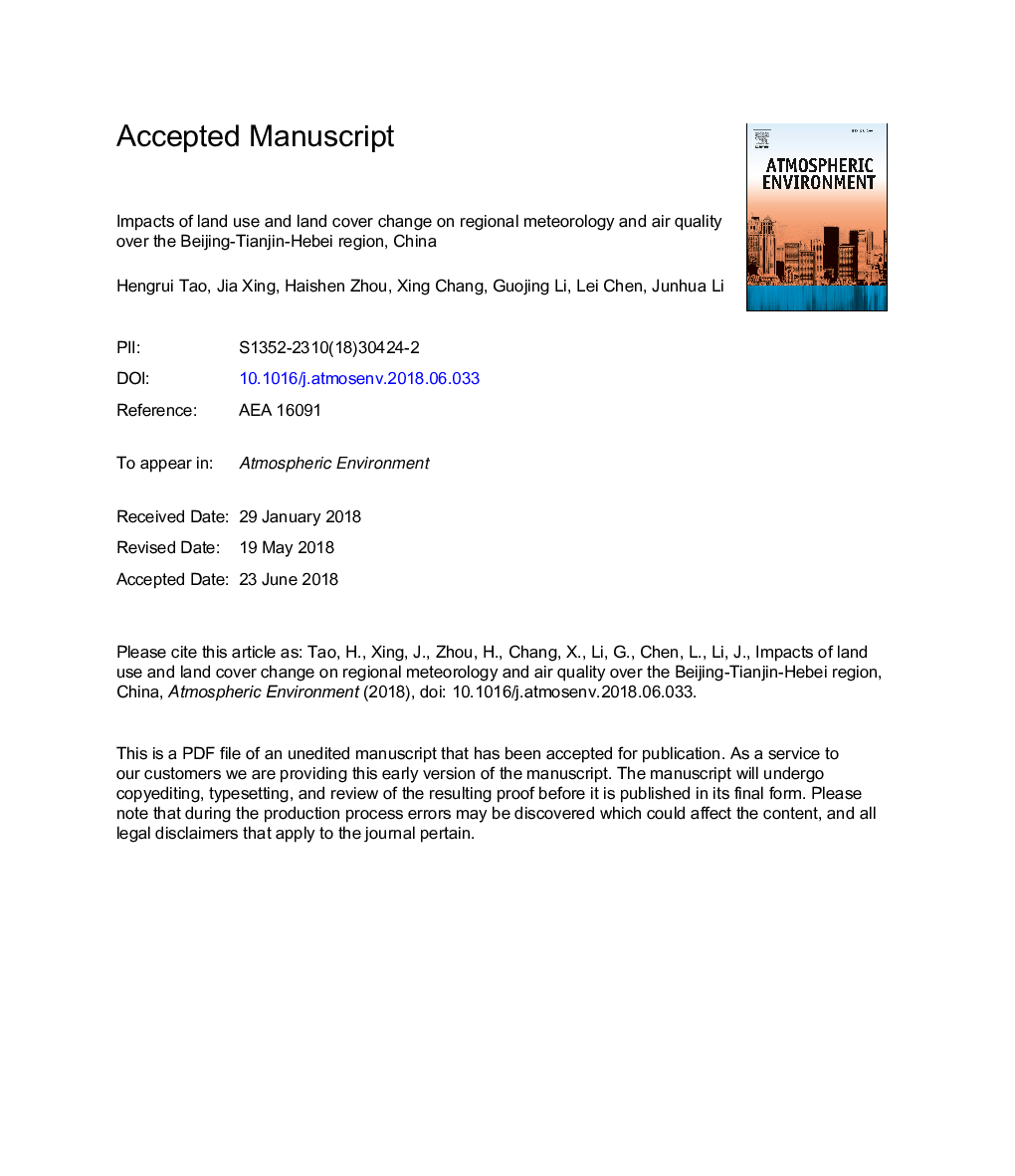| کد مقاله | کد نشریه | سال انتشار | مقاله انگلیسی | نسخه تمام متن |
|---|---|---|---|---|
| 8863519 | 1620285 | 2018 | 42 صفحه PDF | دانلود رایگان |
عنوان انگلیسی مقاله ISI
Impacts of land use and land cover change on regional meteorology and air quality over the Beijing-Tianjin-Hebei region, China
ترجمه فارسی عنوان
تاثیرات استفاده از زمین و پوشش زمینی در هواشناسی منطقه ای و کیفیت هوا در منطقه پکن-تیانجین-هبی، چین
دانلود مقاله + سفارش ترجمه
دانلود مقاله ISI انگلیسی
رایگان برای ایرانیان
موضوعات مرتبط
مهندسی و علوم پایه
علوم زمین و سیارات
علم هواشناسی
چکیده انگلیسی
The land use and land cover (LULC) change can modulate regional meteorology and consequently influence the air quality. This study incorporates two types of LULC data (representing early 1990s and most recent years respectively) into the Weather Research and Forecasting Model-Community Multiscale Air Quality (WRF-CMAQ) model to investigate the impacts of LULC change on the meteorology and air quality. The LULC change and associated parameters including land cover proportion, land surface albedo, roughness length result in some variations of surface energy balance, surface temperature, planetary boundary layer height (PBLH), surface wind speed and direction, which lead to domain-wide increases of 2-m temperature (T2) (0.53-0.96â¯Â°C, 3.6-14.9%), PBLH (3.3-130â¯m, 3.5-38.3%) and decrease of 10-m wind speed (WS10) (0.12-0.47â¯m/s, 5.2-15.7%) in the urban. As a result, the concentrations of air pollutants are also affected by LULC change. It leads to a domain-wide decrease of PM2.5 in the urban. The reductions are more obvious during the rush hour in the morning and evening. The impacts of LULC change on O3 vary in different seasons and cities. In Beijing, O3 increases by 0.5-4.3â¯ppb during daytime in July. While in Tianjin, O3 decreases by up to 3.4â¯â¯ppbâ¯at noon. In summer, the change of O3 is inversely corresponding to NOx change, which may be associated with the VOC-limited O3 chemistry in daytime and NOx titration at night in the urban. In winter, the change of O3 is mainly related to the reduced radiation which is unfavorable for O3 formation. Meanwhile, these changes of PM2.5 and O3 are different under variable levels of air pollution. The largest reduction ratio of PM2.5 occurs at slightly-heavily polluted levels instead of severely polluted level, while the extent of O3 increase becomes greater along with the aggravation of O3 pollution.
ناشر
Database: Elsevier - ScienceDirect (ساینس دایرکت)
Journal: Atmospheric Environment - Volume 189, September 2018, Pages 9-21
Journal: Atmospheric Environment - Volume 189, September 2018, Pages 9-21
نویسندگان
Hengrui Tao, Jia Xing, Haishen Zhou, Xing Chang, Guojing Li, Lei Chen, Junhua Li,
